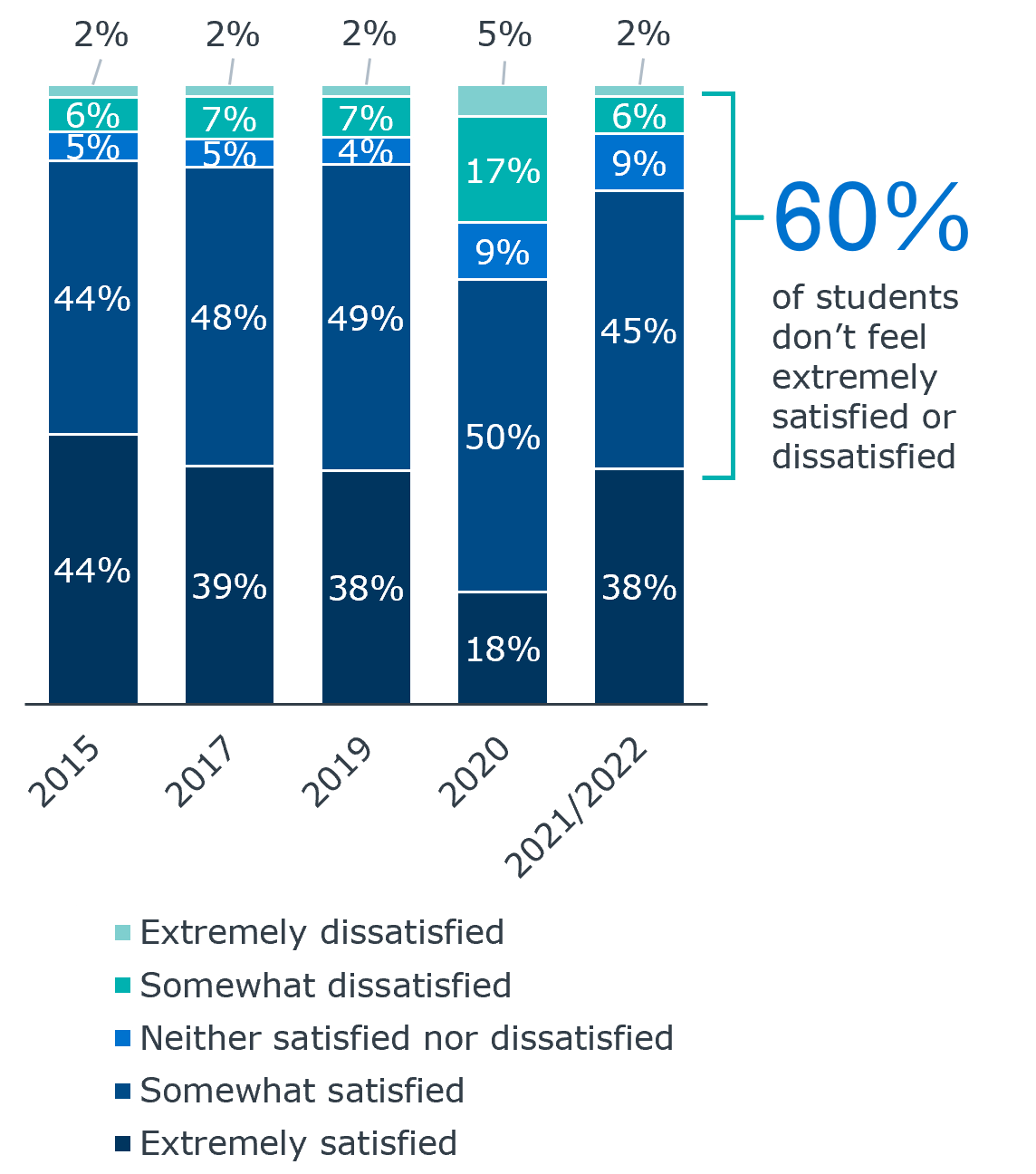Gen Z’s Evolving Enrollment Journey
Change has been one of the few constants of Gen Z’s journey to college. Social distancing transformed their high school experience and accelerated their adoption of digital sources in recruitment. At the same time, attitudes about testing shifted, and skepticism toward the value of college continues to mount.
Despite the rapid pace of change since 2020, the lasting impacts of the pandemic remain to be seen. And amid all this change and uncertainty, competition for students has continued to grow, meaning that it’s critically important—and extremely difficult—for enrollment leaders to adopt student-savvy and nimble practices to meet the needs of today’s students.
This research explores lessons on Gen Z’s evolving journey based on our latest student survey and behavioral data. Read on for selected findings or download the full report.
Virtual tours expand access for lower-income students
Our research supports one of the commonly cited benefits of virtual tours: that they help improve access to campus for students who may not have the resources or flexibility to visit in-person. Students with family incomes of more than $120,000 per year were 83% more likely to have visited more than three schools in person than families making $60,000 or less. By contrast, with virtual tours, the gap in usage across income groups shrinks to 56%.
While it’s encouraging that virtual tours help level the playing field, our data indicates that some disparity remains, suggesting that schools would likely benefit from further promotion of their virtual tours to lower-income students.
Visit behavior by family income
Students who went on more than three visits
Visit incentives can be a powerful draw
Visit incentives can be an effective way to win students’ attention and deepen their affinity for your school by encouraging them to envision their future on your campus. Our survey found that visit incentives are generally very attractive to students, with 64% saying that they’d be encouraged to see a campus if the school offered a $1,000 scholarship “bonus” for students who later enrolled there.
EAB research indicates that institutions who offer such programs often do so in the form of a gap scholarship. One advantage of the scholarship bonus option is that, unlike with other incentive programs, your institution will only spend resources on the students who eventually enroll. In addition to the scholarship incentive, students also found many other offers appealing, with more than a third saying they’d be encouraged to see a campus if they received school apparel, a $100 gift card unrelated to the college, or funds to cover travel costs.
“Which of the following incentives, if any, would encourage you to visit a college you were interested in?”
Student satisfaction is back up from mid-pandemic
Student satisfaction levels took a big dip in 2020 when many campuses were shut down, but they ticked back up to pre-pandemic levels for students entering college in 2021. Whether students are satisfied or dissatisfied, our research shows that classes, social life, and campus are the top factors in their opinion.
It’s important to note that, while students are happier in general now than previously, 60% of students still don’t feel extremely satisfied or dissatisfied. This group should be one of special importance to campus leaders, given the primary role that retention plays in campus enrollment initiatives.
Satisfaction levels have recovered, but many students are still feeling ambivalent



